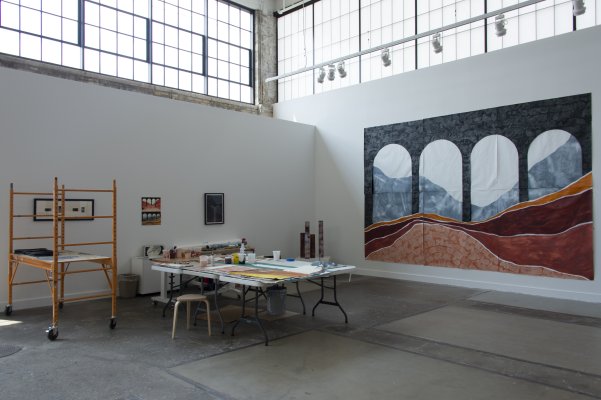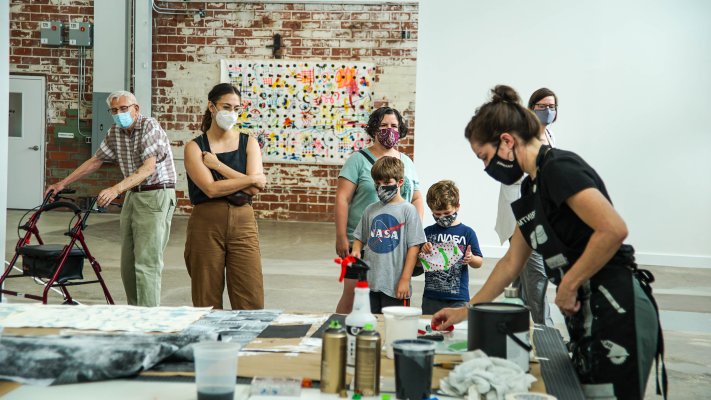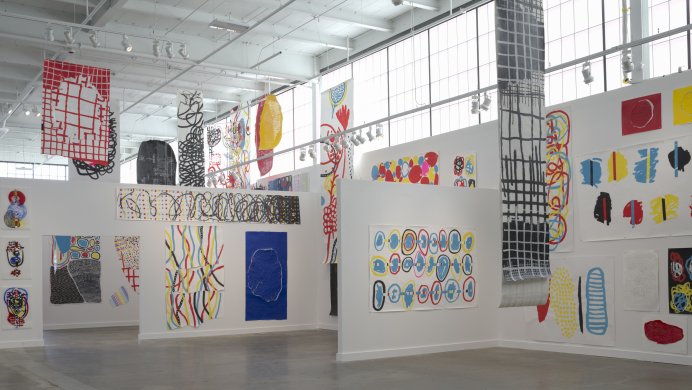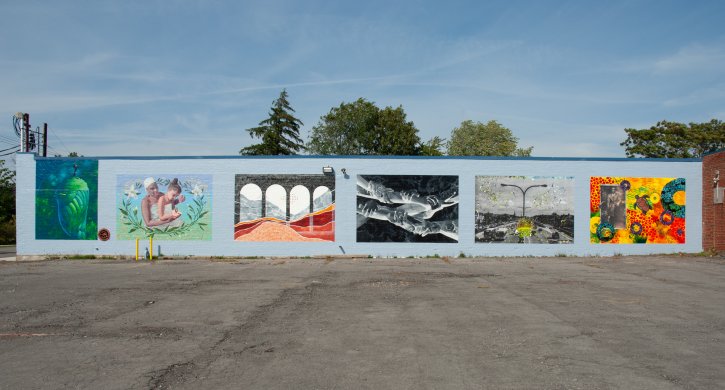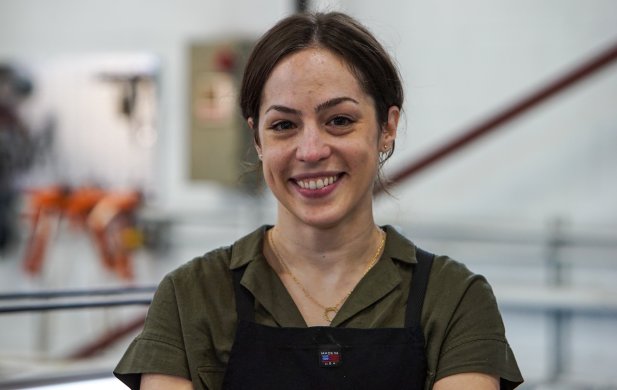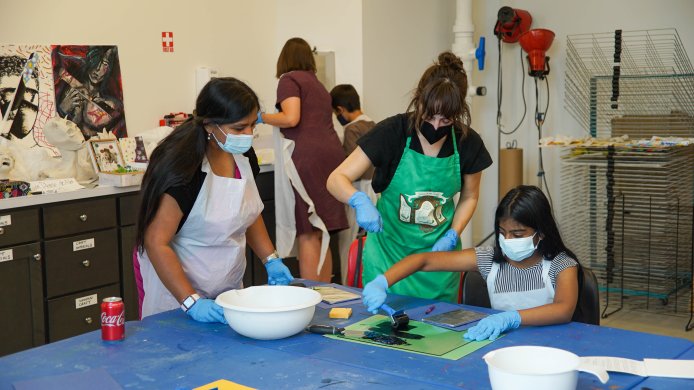Over the course of Hervé Tullet: Shape and Color, six local artists, including printmaker Rachel Shelton, will be in residence at Albright-Knox Northland creating murals that will later be installed in public locations. To celebrate these artists, we are spotlighting each one of them to talk about their practice and the ideas behind their work.
For some artists, making can be a solitary affair—alone in a studio with your work—but printmaking is different. “You're all out in the open space, you're all working on the same ink slabs, you're taking turns using the machines, and everyone's so excited by the process that there's tons of sharing of information happening,” Shelton says.
Shelton was introduced to printmaking at the Cleveland Institute of Art and immediately fell in love with it. With its focus on details, variables, and solving problems, the medium fit her personality, and the collaborative environment was exciting. She was taken under the wing of Printmaking Department head Maggie Denk-Leigh and absorbed everything she possibly could for three years.
By the end of this intensive study, Shelton was able to marry process with idea for the first time, making her first “trees”: copper sheets cut and enameled to resemble—in eerie industrial form—birch trees.
Alongside classes in craft, Shelton explored the history of human society, seeking answers to questions about our relationship with nature. She would spend hours in Cleveland’s nature preserves, looking out across the landscape and trying to find an angle that revealed a Cleveland before human habitation. Shelton's tree works are almost the exact inverse of the nature preserve. Though beautiful, there’s a coldness to them: hollow cylindrical shells, hard to the touch and not rooted to the ground, they remind you of nature lost. For her, it represented making something she had never seen done before.
Ideas fuel much of Shelton's abstract work. After spending years grinding away at a job, her return to graduate school at the University at Buffalo was an opportunity to delve into her own studio practice and to take courses in archaeology. She says, “When your question is a historical one, anecdotal or emotional experience isn't going to cut it.”
Research also led Shelton back to the print shop. She had been saving a collection of her old copper etchings, which one of her professors suggested she could use as monotype plates. The etchings in the copper form background patterns to shapes achieved by monotype: inking and redactive drawing. Through variations of arrangement and transformations to the plates, Shelton could make a nearly limitless series of prints. Through print’s capacity for repetition, the works spoke to one another through a visual language of Shelton's own design.
At around this time, Shelton met Bob Fleming, a community member of the print shop run by UB. After rediscovering print, Shelton had a vision of opening her own studio: somehow buying a house and putting a press in the basement and working with local artists. Bob had similar, if grander, ambitions. He had seen Crown Print Press in San Francisco, one of the premier print studios in the country, and thought Buffalo should have its own. The ambitious undertaking gained traction with the addition of UB alumna Mizin Shin, an impeccable printmaker, who seems to understand how to realize almost any image in print. The three together created Mirabo Press—for Shelton, a dream come true.
An artist driven by the processes afforded by a print studio, Shelton always approached artmaking through a researcher’s brain, applying scholarship to creativity to try to explore questions that troubled her. Recent years filled with difficult personal circumstances have challenged her in a different way, however. “You just come up against things that force you to see that you are a vulnerable person,” Shelton says. The Albright-Knox’s Works, from Home collaborative mural project in spring–summer 2020 represented the first entry in this new phase of work in which she wanted to communicate with an audience in a very different way.
“The trick was combining what I think about,” Shelton says, “which is still important to me, regardless of whether I'm soft and squishy or hardened,” and finding a way to “meld wanting to give everybody a big hug with recognizing that we have all of these problems.”
In some ways, her Albright-Knox Northland residency has been an almost perfect realization of this goal, as she has found herself interacting with young visitors who might be seeing abstract artwork—or an artist in the process of making abstract artwork—for the first time.
People have been coming up to Shelton throughout her residency. When she asks if they are artists, they might say, “Oh, no, I can't do this type of drawing.” However, she says, “showing them a process where you can make drawings that are abstract and hold just as much weight as something photorealistic, they give themselves permission to think, ‘Oh, maybe I can do that.’”
We invite you to come and interact with Shelton, as well as artists Julia Bottoms and Tricia Butski, during their last weekend in residence at Albright-Knox Northland, July 30–August 1. In order to ensure a safe environment for all, we encourage you to review our Courtesy Code and reserve your visit date and time prior to your arrival.
You can also sign up for a free Tin Foil Lithography workshop with Shelton at Albright-Knox Northland on Saturday, August 7, 10–11:30 am, or Saturday, August 21, 10–11:30 am.
